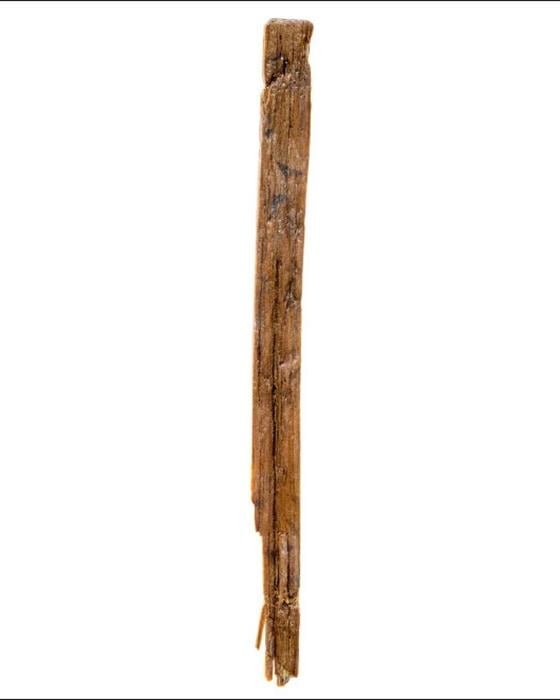Researchers from Japan’s Nara National Research Institute for Cultural Properties have uncovered a 1,300-year-old wooden tablet that appears to be part of Japan’s oldest known multiplication table.

Unearthed in 2001 at the site of Fujiwara-kyo, Japan’s ancient capital, the artifact was found in what is believed to have been the office of the “Emon-fu,” the guards’ bureau responsible for security and administrative duties within the central government. After extensive analysis, the research team confirmed its significance on September 4, 2024.
The fragment, measuring 16.2 centimeters long and 1.2 centimeters wide, was initially difficult to decipher due to the irregularity of the characters. The researchers initially thought it was a practice tablet. However, further investigation using infrared imaging revealed equations such as “9 x 9 = 81,” “4 x 9 = 36,” and “6 x 8 = 48” inscribed in kanji (Chinese characters), arranged in five rows from right to left. This organization mirrored the layout of Chinese multiplication tables from the Qin and Han dynasties, which existed between the 3rd century BCE and 3rd century CE.
“If the multiplication table were complete, the wooden tablet would measure 33 centimeters in length with all the equations written out,” said Kuniya Kuwata, senior researcher at the Nara National Research Institute for Cultural Properties. Kuwata, who led the study, was surprised by the tablet’s sophisticated layout. “I initially thought Japanese multiplication charts only had two to three equations per line, so I was genuinely surprised to find one with so many, similar to those in China and Korea.”

While earlier multiplication tables found in Japan were much simpler, often featuring only two to three rows, this artifact’s five-row style represents a more advanced form of mathematical recording. Scholars believe the multiplication table was likely used by the Emon-fu for administrative purposes, such as calculating taxes or organizing the work schedules of government officials.
Fujiwara-kyo, where the tablet was found, was Japan’s first capital modeled after Chinese cities, as described in the Nihon Shoki chronicle. The city was established in 694 and served as the political and cultural hub of Japan until 710. The site of the discovery, the ruins of Fujiwara Palace, is located in present-day Kashihara in Nara Prefecture.
What makes this find even more remarkable is the possibility that the multiplication table might have been created during the Kofun Period, which spanned from the mid-third to the seventh century, long before Fujiwara-kyo became the capital. The researchers have speculated that such tables could have been employed in the design of the era’s massive burial mounds, further emphasizing the practical application of mathematics in ancient Japan.
The team’s findings were published in the 2024 Annual Bulletin of the Nara National Research Institute for Cultural Properties, contributing a pivotal piece to the puzzle of early Japanese mathematics and administration.
























